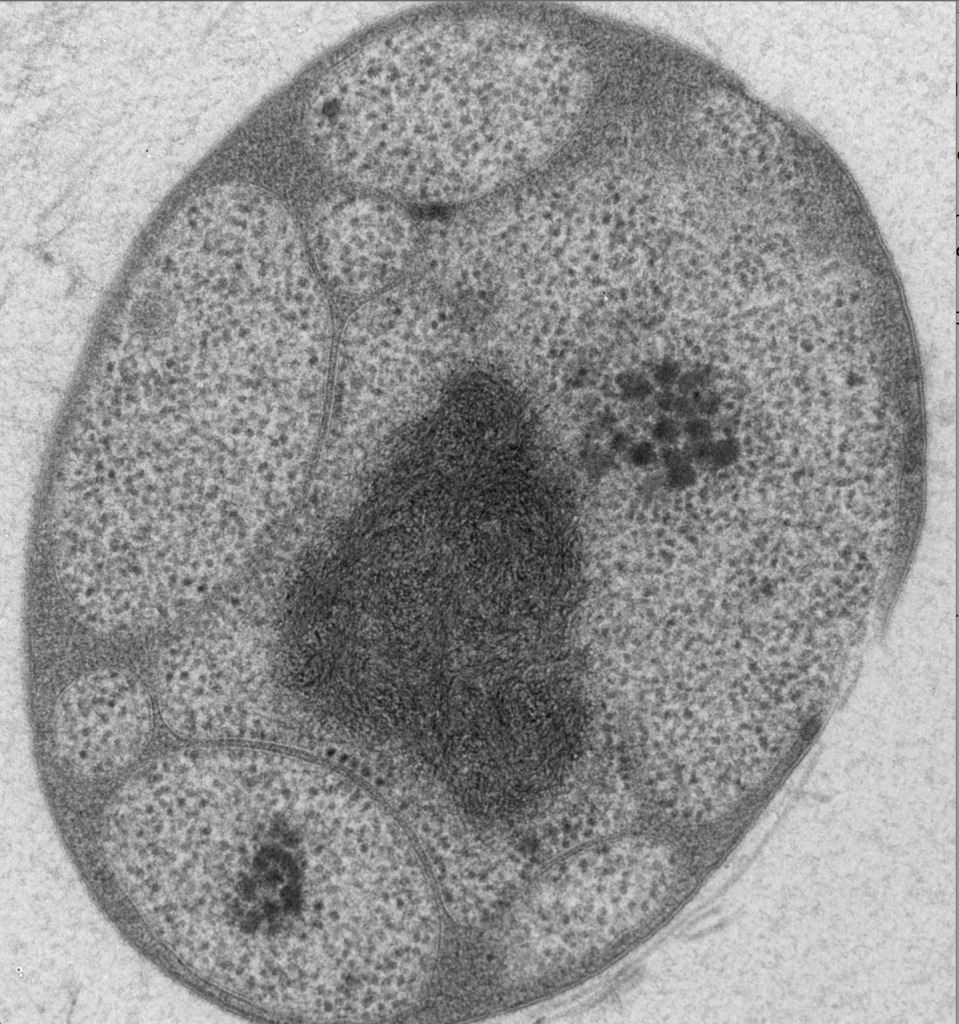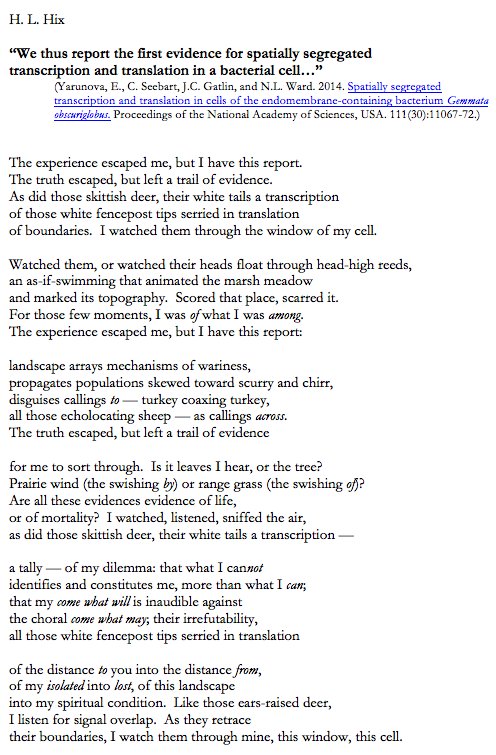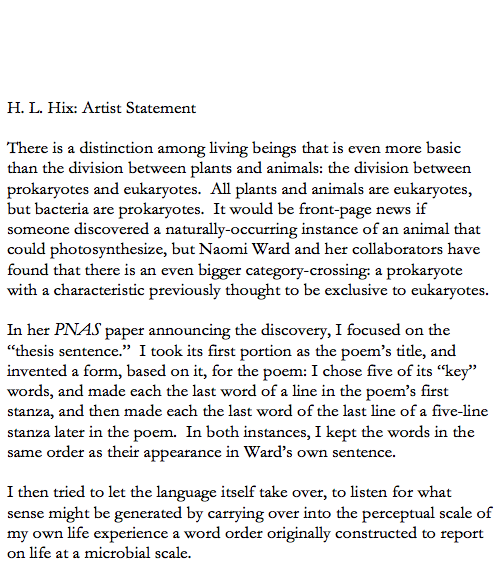Gemmata obscuriglobus
About this microbe: Naomi Ward
Gemmata obscuriglobus (“budding dark sphere”) belongs to an unusual group of bacteria known as the planctomycetes. Inhabiting terrestrial, marine, and freshwater environments, the planctomycetes are best known for their unusual external and internal cellular structures. Some (like Planctomyces bekefii, featured in this bestiary) exhibit strange external shapes such as striking clusters of cells connected through stalk-like structures. All planctomycetes studied to date also contain unusual internal membrane structures, and it is for this that Gemmata has been most extensively studied. The Gemmata cytoplasmic membrane (which lies inside the cell wall and surrounds and contains the cellular contents) contains multiple folds that greatly increase its surface area, and lend a compartmentalized appearance to cells imaged by electron microscopy (as shown here). The overall functional basis of this membrane modification is unclear, but it has been shown to result in production of cellular proteins at parts of the cell that are very distant from the cell’s DNA (the central “dark sphere” visible in the image). This is unusual for bacteria, where the copying of DNA to RNA to make a temporary message (transcription) and the translation of RNA to protein (translation) are “coupled” – co-occurring in time and space. The separation of these processes in Gemmata is reminiscent of the decoupled transcription and translation occurring in eukaryotic cells, those of plants and animals.
Another peculiar feature of Gemmata is that its cellular membranes contain sterols, which is very rare in bacteria, and sterols are essential for this species to grow. In fact, Gemmata is the first bacterial species in which sterols have been shown to be essential. When the cells are prevented from making sterols, the normal budding replication of Gemmata is inhibited and the organism dies. Sterols (such as human cholesterol) are bulky lipid (fat) molecules and one of their major functions is to make cell membranes more rigid and less flexible. Instead of sterols, bacteria usually obtain this membrane reinforcement through use of molecules called hopanoids. Why Gemmata uses sterols for this function currently remains a mystery.
Artist Response: H. L. Hix



